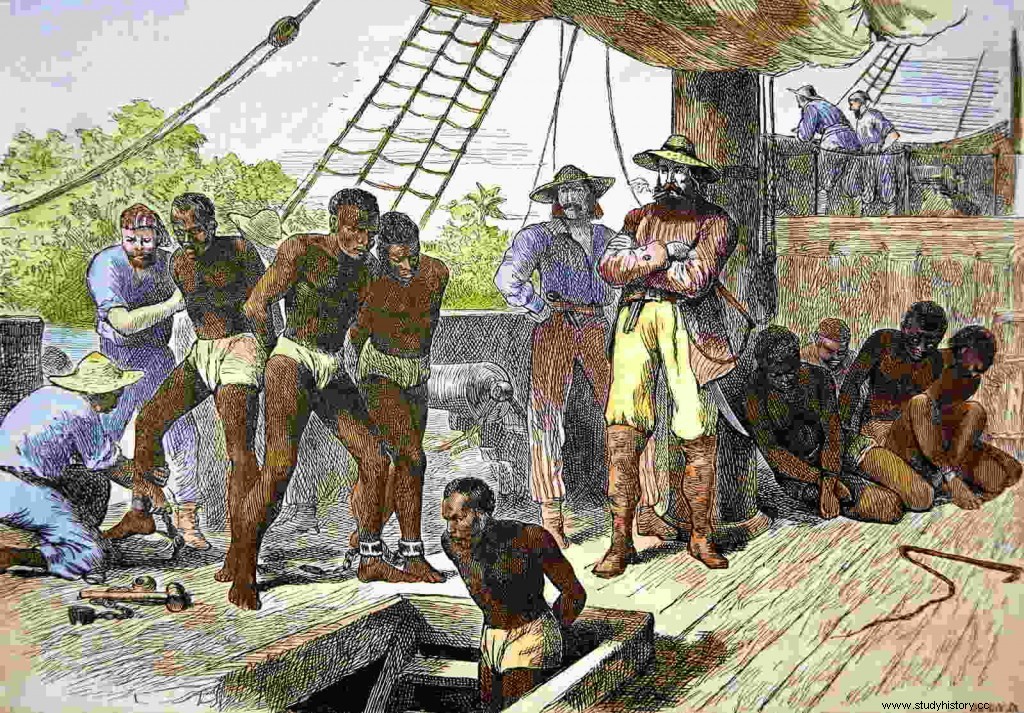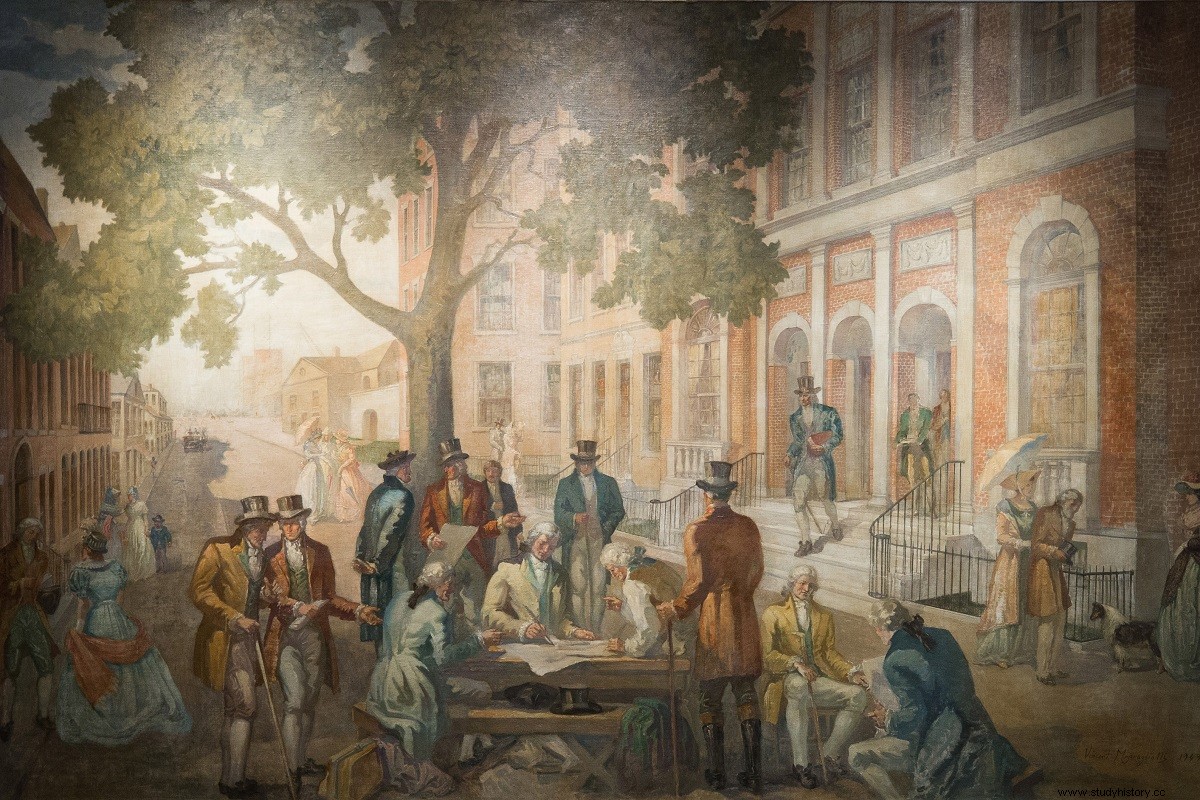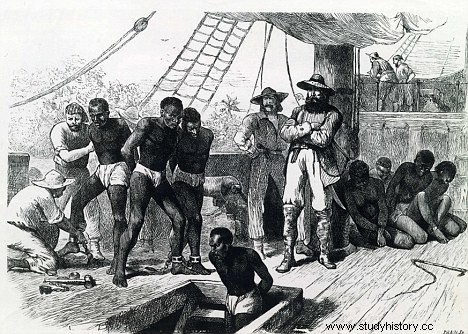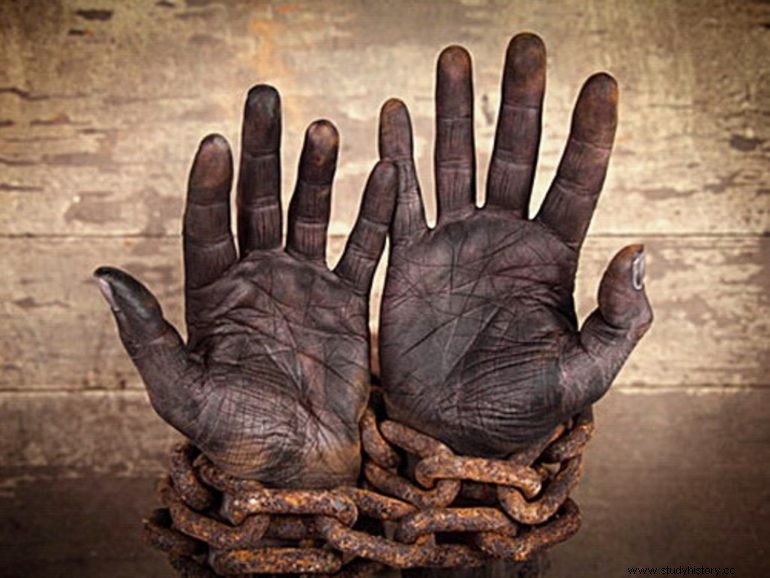Although to date they have fallen on deaf ears, since the end of the last century and the beginning of this one an initiative of African-Americans has been gaining strength in the United States that, in the style of the reparations paid to the Jews and to the State of Israel by Germany They demand compensation for the slavery suffered for centuries by their ancestors. In the eye of the storm, the banks and insurers that, in one way or another, were linked to human commerce:banks like JP Morgan Chase , Bank of America , Royal Bank of Scotland , Wachovia Bank of North Carolina or the disappeared Lehman Brothers , and insurance companies such as Aetna Inc. , New York Life Insurance or Lloyd's of London .

How did they participate in the slave trade?
In 1625 the Dutch West India Company founded New Amsterdam in the Hudson Valley. (today New York), a strategic settlement that would control the fur trade across the river. In 1653, to protect themselves from attack by Native Americans and the English, Dutch settlers built a wall of wood and mud on the northern edge of the new city. Well, they ordered it to be built, because the ones who actually built it were the African slaves brought to the colony in 1627. Although years later the English demolished it, the name of Wall Street (Wall Street) continues to remember that wall. And not only did they build that wall, they also cleared the forests, built the roads, the mills, the bridges, the houses, the dock, the prison, the church...
At the end of the 17th and beginning of the 18th century, already in the hands of the English and under the name of New York In honor of James II, King of England and Duke of York, the city experienced rapid growth based on the work of slaves. Seeing that they could still get more out of them, they decided to enter fully into the slave trade business. In 1711 the New York City Council approved the creation of the first slave market in the city, precisely on Wall Street. That market, known as Meal Market (in which grain and meat were also sold), was crucial in the transatlantic slave trade. The slave ships from Africa arrived in New York loaded with slaves that were sold as labor, especially for the cotton plantations -up to 20% of the population of New York were slaves-, and from the same port it was distributed the cotton itself. Logically, the insurers of the ships, the big merchants and banks that financed the trips and the landowners of the plantations had to be close to their investments. On May 17, 1792, at 68 Wall Street, to keep speculators and auctioneers out of the market, 24 city businessmen and merchants signed the Buttonwood Agreement (it was signed around a buttonwood tree), by which they agreed to create an orderly and regulated stock market, which would be the seed of the New York Stock Exchange. So Wall Street is also directly related to slavery.

These banks lent money to slave owners and accepted them as "collateral". When slave owners defaulted on their loans, the banks became the new owners. Plantation owners, on the other hand, insured their “assets” by signing life insurance policies with insurers to collect premiums in the event of the death of slaves. For example, in 1856 for $2 you could sign a 12-month policy and insure a 10-year domestic slave and collect a $100 premium in case of death. For a 45-year-old it "shot" at $5.50. Likewise, the owners of the slave ships signed policies to insure the “cargo” in case of loss, capture or death. Logically, sometimes there were disputes between insurers and shipowners that went to court, such as the one that occurred with the Zong ship.
The Zong set sail from the island of São Tomé, off the west coast of Africa, for Jamaica on September 6, 1781, on a voyage that was to last about two months. The ship's captain, Luke Collingwood, wasn't exactly a sea dog, and all he cared about was money:more slaves, more money. So, he loaded 442 slaves, much more than normal for that type of ship. Overcrowding, malnutrition, and disease began to take their toll on the slaves and crew:60 slaves and 7 crew members died. On November 28, when he was supposed to have arrived, the captain realized that they had made a navigation error and that, by changing their course, it would still take almost another month to reach their destination. Collingwood began to do the math:if the slaves kept dying or getting sick they would lose about 30 pounds apiece. He gathered the crew and explained the situation to them:the insurance that the shipowners had taken out insured the loss, capture or death of the slaves -shipwreck, boarding or revolt, for example-, but cases of natural death, illness or suicide. Collingwood proposed throwing sick slaves overboard. In this way, and using jettisoning, a figure of Maritime Law that allows the captain to deliberately throw part of the cargo into the sea in order to save the rest of the merchandise, he eliminated sick slaves who would not have been covered by insurance. The justification for using this figure was that they did not have enough water to cover the needs of the crew and the “cargo”. For several days slaves were thrown overboard; initially, women and children, and later, men, up to a total of 133.

On December 22, 1781, the Zong arrived in Jamaica with 208 slaves. After selling them, William Gregson, the shipowner, claimed £4,000 from the insurer for the lost slaves. The insurer refused to pay because it was considered "mishandling of the cargo" and the case went to court, but not because of the murder of 133 people, but rather because of whether or not the insurer should compensate the shipowner. In 1783 the trial began in London with only the statements of the crew since, mysteriously, the ship's log had been lost. In this first trial, the shipowners of the Zong were right. However, the insurance company appealed and asked that the case be tried before the Supreme Court. In this second trial, in which the insurer presented evidence that there was more than enough water on the ship, the English abolitionist Granville Sharp appeared requesting that the case be tried for the murder of 133 people. The president of the Supreme Court, Lord Mansfield, faced with the new evidence, accused the crew of negligence for throwing the slaves out with enough water - "mishandling of the cargo" it was called - and annulled the previous sentence, agreeing with the insurer. , but declined to treat the case as murder. In fact, he gave as an example that it would be the same as if the load had been horses.

Although some of these companies have acknowledged their involvement in the human trade, such as Aetna which has apologized for its involvement or JP Morgan Chase which, after consulting the files of its predecessors, found that they accepted approximately 13,000 slaves as collateral and ended up owning 1,250 , no repairs at all.
